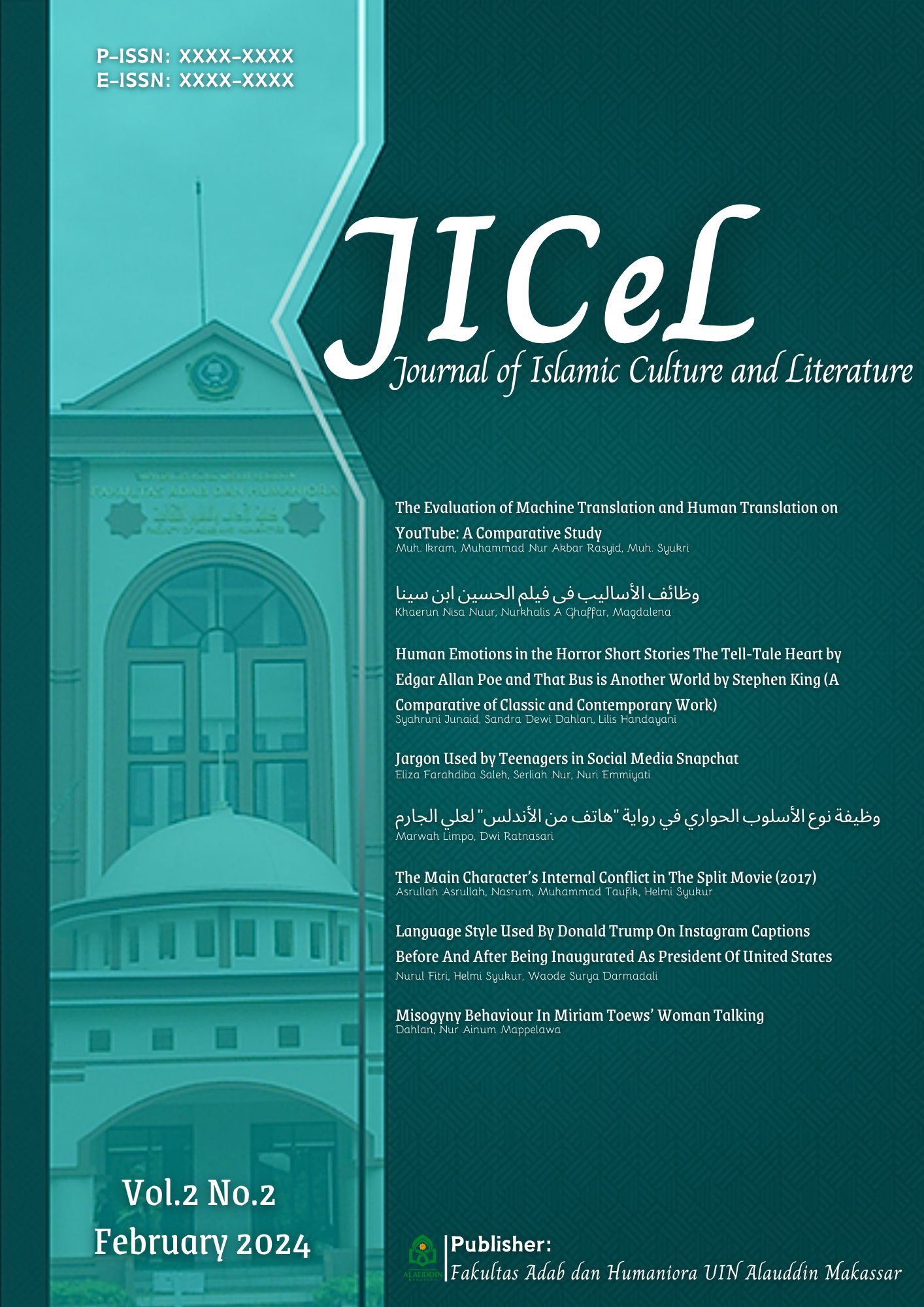The Main Character’s Internal Conflict in The Split Movie (2017)
Internal Conflict
Abstract
This study aims to analyze “The Split" movie by using Roman Jakobson's structuralism approach, with Myers' conflict theory. This approach is used to find out the internal conflicts that occur in the main character in the split film and the conflict resolution. Besides that, the researcher elaborated on the results of this study using a qualitative descriptive method. As a result, the researchers found five conflicts within the main character in the film "Split", the five conflicts include: Personality Battles, emotional control, Value and Motivational Conflicts, Sense of Identity and Past Influences. Meanwhile, the researchers also found conflicts between the main figures and the community, including: conflicts with investigators and psychiatrists, conflicts with the victims, namely the three students, and conflicts with employees and security guards. Finally, the researcher found a solution to the conflict that occurred in the split film, namely: Psychological Therapy, Personality Integration, Awareness and Acceptance and Social Support. Therefore, if someone experiences internal conflicts or mental problems, it is very important to seek professional help such as a psychologist or psychiatrist who can provide appropriate and supportive treatment.
Keywords: Internal Conflik, Literary Work, Movie
Authors who publish with this journal agree to the following terms:
1) Authors retain copyright and grant the journal right of first publication with the work simultaneously licensed under a Creative Commons Attribution License that allows others to share the work with an acknowledgement of the work's authorship and initial publication in this journal.
2) Authors are able to enter into separate, additional contractual arrangements for the non-exclusive distribution of the journal's published version of the work (e.g., post it to an institutional repository or publish it in a book), with an acknowledgement of its initial publication in this journal.
3)Authors are permitted and encouraged to post their work online (e.g., in institutional repositories or on their website) prior to and during the submission process, as it can lead to productive exchanges, as well as earlier and greater citation of published work (See The Effect of Open Access).

3.png) Scopus ID:
Scopus ID:_3.png) ORCHID ID:
ORCHID ID:
3.png) G-Scholar ID:
G-Scholar ID:
3.png) SINTA ID:
SINTA ID:

